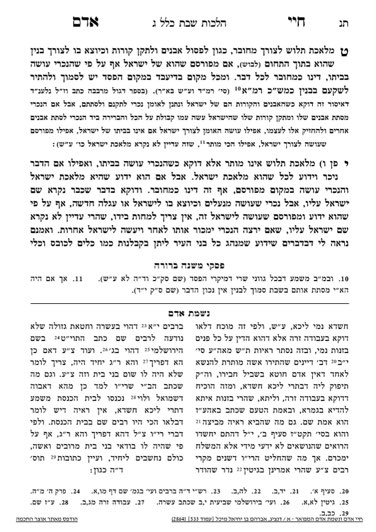We are beginning siman 10 (we will skip siman 8 and 9). The Chayei Adam will discuss the sixth criterion for it to be permitted to make an arrangement with a non-Jew before Shabbos regarding melacha on Shabbos. In criterion five, we learned the difference between work on something mechubar, which is generally assur, and work on something talush, which we said is muttar. In this criterion (number 6), the Chayei Adam qualifies that in order for a non-Jew to work on something talush, it must be in the non-Jew’s house and not in public. Once the non-Jew is doing the work in his own house, there is no issue of maris ayin. Conversely, if the non-Jew is doing the work in a public place, there will be an issue of maris ayin.
We have touched on this point previously with the example of a non-Jewish mechanic doing work on a distinctively Jewish car, such as a car with distinctly Jewish bumper stickers or a custom license plate. If the mechanic keeps his garage doors closed, it is muttar, but if he keeps them open, it is a problem of maris ayin.
The Chayei Adam continues and qualifies that if a non-Jew is hired to create something, such as to make a pair of shoes for the Jew, it is muttar for the non-Jew to work on the item in public, even if Jewish shoes are made in a way which is distinctively different than non-Jewish shoes. The Chayei Adam explains that even if the non-Jew was commissioned by the Jew, the non-Jew still owns the shoes which he is creating them, and has the right to give those shoes to someone else and make a different pair of shoes for the first person.
The Chayei Adam writes that if it is well known that the melacha in question is done through kablanus, there is no concern that people will mistake the arrangement for a sechir yom arrangement. However, if people may mistake the arrangement for that of a sechir yom, we may have an issue. We will discuss this point in the next shiur, be’ezras Hashem.
Summary
- If one instructs a non-Jew before Shabbos, there are times when it will be muttar, depending on eight conditions.
- The sixth condition is that even if the item is talush, it must not be worked on in public, due to a concern of maris ayin.
- If the non-Jew still owns the rights to the item (e.g., he was commissioned by the Jew and is still creating the item), he may work on it in public.



